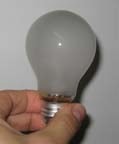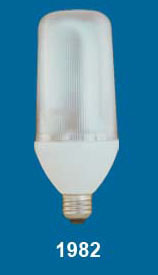 Edison's Bulb
Edison's Bulb Energy Saving Light Bulbs were available in 1982, so why did it take so long for these new light bulbs to become readily available to the public!
In 1982, the word around the industry was that it cost only "seven pennies" from raw material to supermarket shelf to make a 75 watt bulb. A bulb that sold for $1.15, or around .85 cents when on sale. A bulb that burned-out after only 750 hours of use, thus guaranteeing repeat business. So why would a major manufacturer make an energy saving bulb that would last 10,000 hours and kiss goodbye all those profits from an inefficient incandescent light bulb? This was a product with a huge mark-up and who would care that it was so grossly inefficient?
The incandescent bulb is so inefficient that out of the 100% of electricity used to operate the bulb, 90% generates heat! Only 10% of the electricity consumed produces light!
 Phillip's SL-18 Bulb
Phillip's SL-18 Bulb The end results: Years had to pass, patents had to expire, educated consumers had to prevail, demand had to increase, the price of oil had to go up, corners were cut to make cheaper versions of these energy saving bulbs, quality had to be sacrificed so prices would come down, and valuable time to save energy and money was lost.
Updated Blog Post - Published Article from EnergyHotwire.com to GoingTrueGreen.com
Bill Lauto, at GoingTrueGreen.com
Environmental Scientist
International Sustainability and Energy Consultant
Contribute your comments!





















